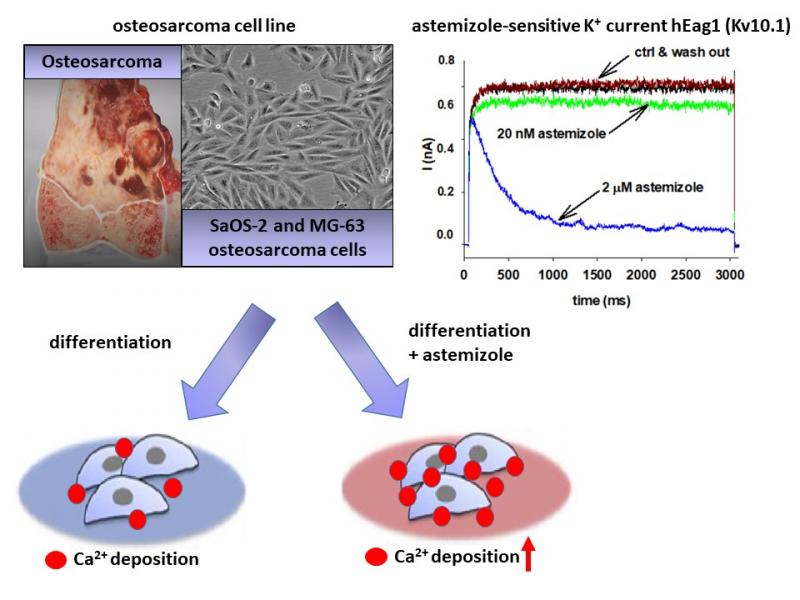
Osteosarcoma is the sixth most common cancer in children and adolescents; therefore, the development of novel treatment strategies is very important to cure the patients. The expression of voltage-gated hEag1 K+ channel (Kv10.1) was described in a wide range of cancer and tumor cells, and these can influence the osteogenesis in other cell types. Therefore, Prof. Gyorgy Panyi and his colleagues hypothesized that hEag1 may play a role in the osteogenic differentiation of osteosarcoma, so it would be a potential drug target in the treatment of disease. Using molecular biology (RT-PCR), electrophysiology (patch-clamp) and pharmacology (astemizole sensitivity, IC50=0.135 M) they demonstrated that SaOS-2 osteosarcoma cells also express hEag1 channels. Astemizole is an old antihistamine, which is able to inhibit the hEag1 channels as well. Astemizole (in 2µM) significantly increased/enhanced Ca2+ deposition (a marker of mineral matrix production) of SaOS-2 and MG-63 cell cultures when osteogenic differentiation was induced either by the classic or by the pathological pathway. hErg1(Kv11.1) is very sensitive ion channel for the astemizole, but they did not detect either the transcript or the hErg1 protein in SaOS-2 and MG-63 cells, and the electrophysiological measurement did not reveal the presence of hErg1-like current in SaOS-2 osteosarcoma cells either. They propose that the inhibition of hEag1 may be a useful tool to drive terminal differentiation of osteosarcoma by repurposing a well-known antihistamine drug, astemizole. Their results were published in the International Journal of Molecular Sciences (DOI: https://doi.org/10.3390/ijms231810533)